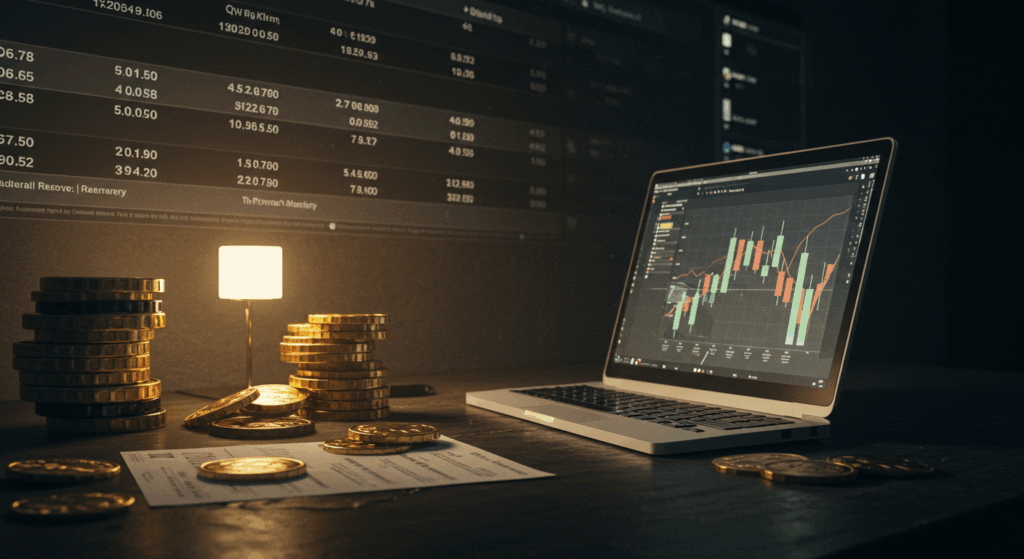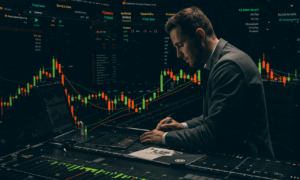An investment landscape once dominated by familiar household names is witnessing a seismic shift, powered by the explosive growth of artificial intelligence. In a stunning development that captures the essence of this new era, a company that was once primarily known to gamers and tech enthusiasts has surged to the top of the financial world. We are talking, of course, about Nvidia. This article will break down the recent news of Nvidia becoming the world’s most valuable company, explain the forces driving this incredible ascent, and explore what it means for the market and for you as an informed observer of the financial world. We will provide the key data and explain the core concepts to help you understand this major market event.
The Milestone: What Exactly Happened?
In mid-June 2024, semiconductor giant Nvidia achieved a historic milestone: its total market value surpassed that of tech titans like Microsoft and Apple, making it the most valuable publicly traded company on the planet. To put this in perspective, the company’s market capitalization—the total value of all its shares combined—soared past an astonishing $3.3 trillion. This is a figure larger than the entire economy of countries like the United Kingdom or France.
This meteoric rise was not an overnight event but the culmination of a massive surge in its stock price over the last 18 months. The demand for its technology has been relentless, causing its value to multiply at a breathtaking pace. Adding to the buzz, Nvidia recently completed a 10-for-1 stock split. So, what does that mean?
- What a stock split is: Imagine you have one large pizza slice worth $10. A stock split is like the pizzeria cutting that slice into 10 smaller slices, each now worth $1. You still have $10 worth of pizza, but it is now in more, smaller pieces.
- Why companies do it: A lower price per share makes the stock more accessible to retail investors who might be intimidated by a share price of over $1,000. It increases liquidity but does not change the company’s underlying value or your total investment amount.
The combination of its soaring valuation and the recent stock split has put Nvidia at the center of countless financial discussions, leaving many to wonder what is fueling this unprecedented growth.
The Driving Force: Why Nvidia is at the Heart of the AI Revolution
To understand Nvidia’s dominance, you need to look beyond the stock charts and into the very technology that powers the current Artificial Intelligence (AI) boom. Nvidia designs and manufactures high-performance Graphics Processing Units, or GPUs. While these chips were originally created to render realistic graphics for video games, their unique architecture has made them the essential engine for modern AI.
Think of it this way: if the global AI boom is a massive gold rush, Nvidia is not just selling the shovels and pickaxes—it is selling the advanced, high-powered machinery that everyone needs to have any chance of success. Here is why its GPUs are so critical:
- Parallel Processing Power: Unlike a computer’s main processor (CPU), which handles tasks one by one in a sequence, a GPU can perform thousands of calculations simultaneously. This parallel processing capability is exactly what is needed to train large language models (LLMs) and other complex AI systems, which involves analyzing vast amounts of data all at once.
- Unmatched Demand: Every major tech company, from Google and Amazon to Meta and OpenAI (the creators of ChatGPT), relies heavily on Nvidia’s GPUs to build and operate their AI platforms. This has created a massive, sustained demand for Nvidia’s products, allowing the company to command high prices and generate record-breaking revenues.
- A Strong Ecosystem: Nvidia has also built a powerful ecosystem of software and tools (like its CUDA platform) that makes it easier for developers to build AI applications using its hardware. This has created a deep “moat” around its business, making it difficult for competitors to catch up.
This perfect storm of having the right technology at the exact moment of a massive technological shift has propelled Nvidia from a successful chipmaker into a global economic powerhouse.

The Bigger Picture: What This Means for the Stock Market
Nvidia’s ascent to the top is more than just a story about one company; it reflects broader trends and raises important questions about the state of the market. The sheer size of Nvidia and a handful of other tech giants has led to a phenomenon known as market concentration.
The S&P 500, a key index often used as a benchmark for the entire US stock market, is now more top-heavy than ever. The performance of a few mega-cap stocks, including Nvidia, has a disproportionately large impact on the index’s overall movement. This concentration has significant implications for the wider economy and for individual portfolios.
On one hand, the growth of these companies has driven the market to new highs, generating substantial wealth for investors. On the other hand, it introduces a significant risk. If these top companies were to falter, their decline could pull the entire market down with them. This has sparked a debate among analysts:
- Is this a bubble? Some experts worry that the excitement around AI has created an unsustainable bubble, with valuations that are not justified by underlying profits. They draw parallels to the dot-com bubble of the late 1990s.
- Is this a new paradigm? Others argue that the AI revolution is a fundamental technological shift, similar to the invention of the internet, and that the leading companies are poised for even more growth as AI becomes integrated into every aspect of our lives.
Only time will tell which view is correct, but it highlights the importance of a measured and informed approach to the markets.
Key Takeaways for the Everyday Investor
Watching a company like Nvidia experience such explosive growth is exciting, but it is crucial to ground that excitement in sound principles. Here are a few key takeaways to consider, not as advice, but as educational points.
Diversification Remains Your Best Friend: The rise of Nvidia is a perfect case study in the power of a single stock, but it is also a powerful reminder of concentration risk. Placing too much of your capital in one company or one sector can expose you to significant volatility. A core principle of any sound investment strategy is diversification—spreading your money across different assets, industries, and geographies to reduce risk.
Understand Hype vs. Fundamentals: A stock’s price is driven by supply and demand, which can be heavily influenced by market sentiment and hype. A company’s fundamental value, however, is based on its actual performance, such as its revenue, earnings, and growth prospects. It is important to look past the headlines and understand the business behind the stock.
Focus on Your Long-Term Goals: It can be tempting to chase hot stocks, a strategy known as “fear of missing out” or FOMO. However, successful long-term investing is typically built on a consistent, disciplined strategy that is aligned with your personal financial goals, risk tolerance, and time horizon, not on reacting to short-term market news.
Disclaimer: The information provided in this article is for educational and informational purposes only and does not constitute financial or investment advice. You should consult with a qualified professional before making any financial decisions.
Frequently Asked Questions (FAQ)
What is market capitalization and why is it important?
Market capitalization, or “market cap,” is the total dollar value of a company’s outstanding shares of stock. It is calculated by multiplying the total number of a company’s shares by the current market price of one share. It is important because it is a simple and effective way to gauge a company’s size. Companies are often categorized by their market cap (e.g., large-cap, mid-cap, small-cap), which helps investors understand the company’s scale and potential risk and growth profile.
Does a stock split mean the stock is now “cheaper” and a better buy?
A stock split makes the price of a single share lower, but it does not make the company itself any “cheaper” or change its fundamental value. Because the number of shares increases proportionally, the company’s total market capitalization remains the same immediately after the split. While a lower share price can make it more accessible for investors to buy a whole share, it does not, by itself, indicate whether the stock is a good or bad investment. The decision to buy should be based on the company’s financial health, growth prospects, and your own investment strategy.



